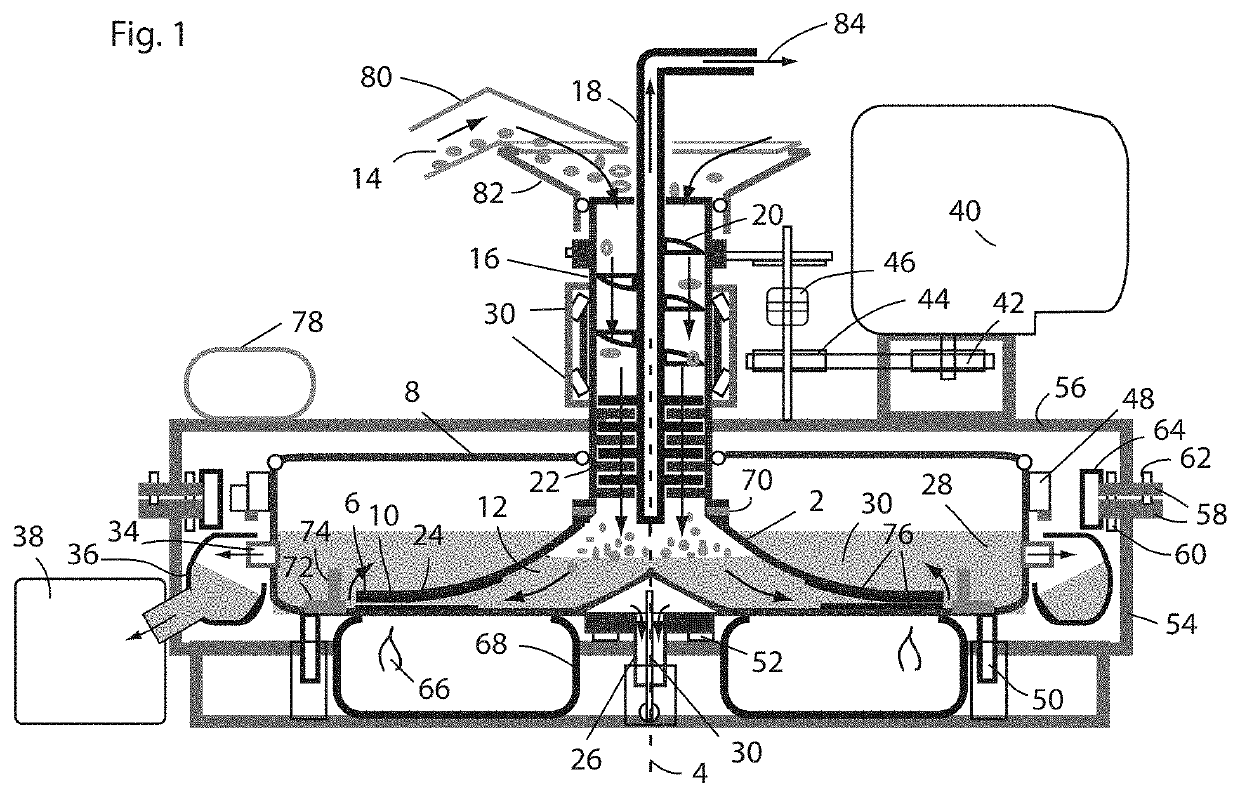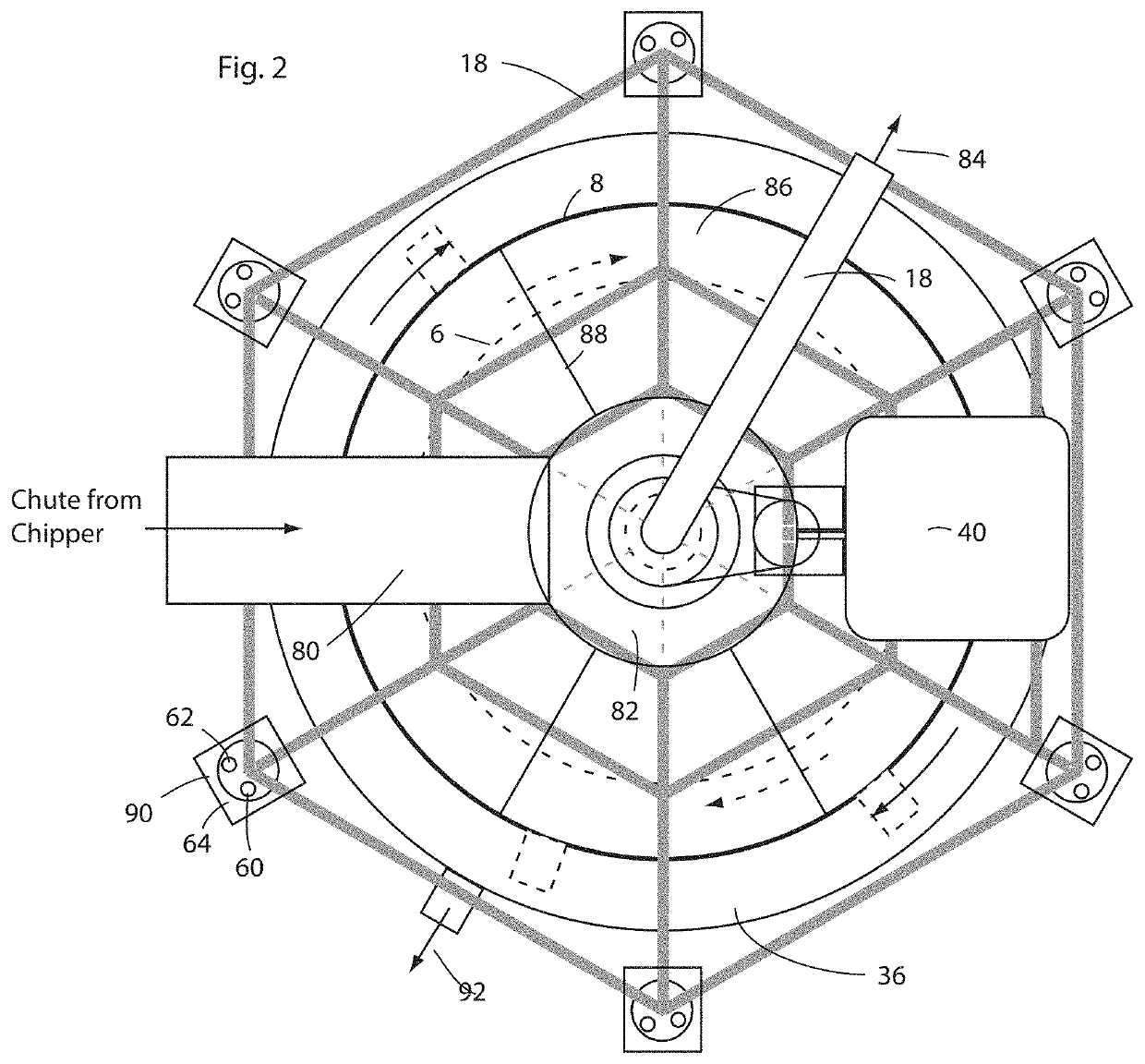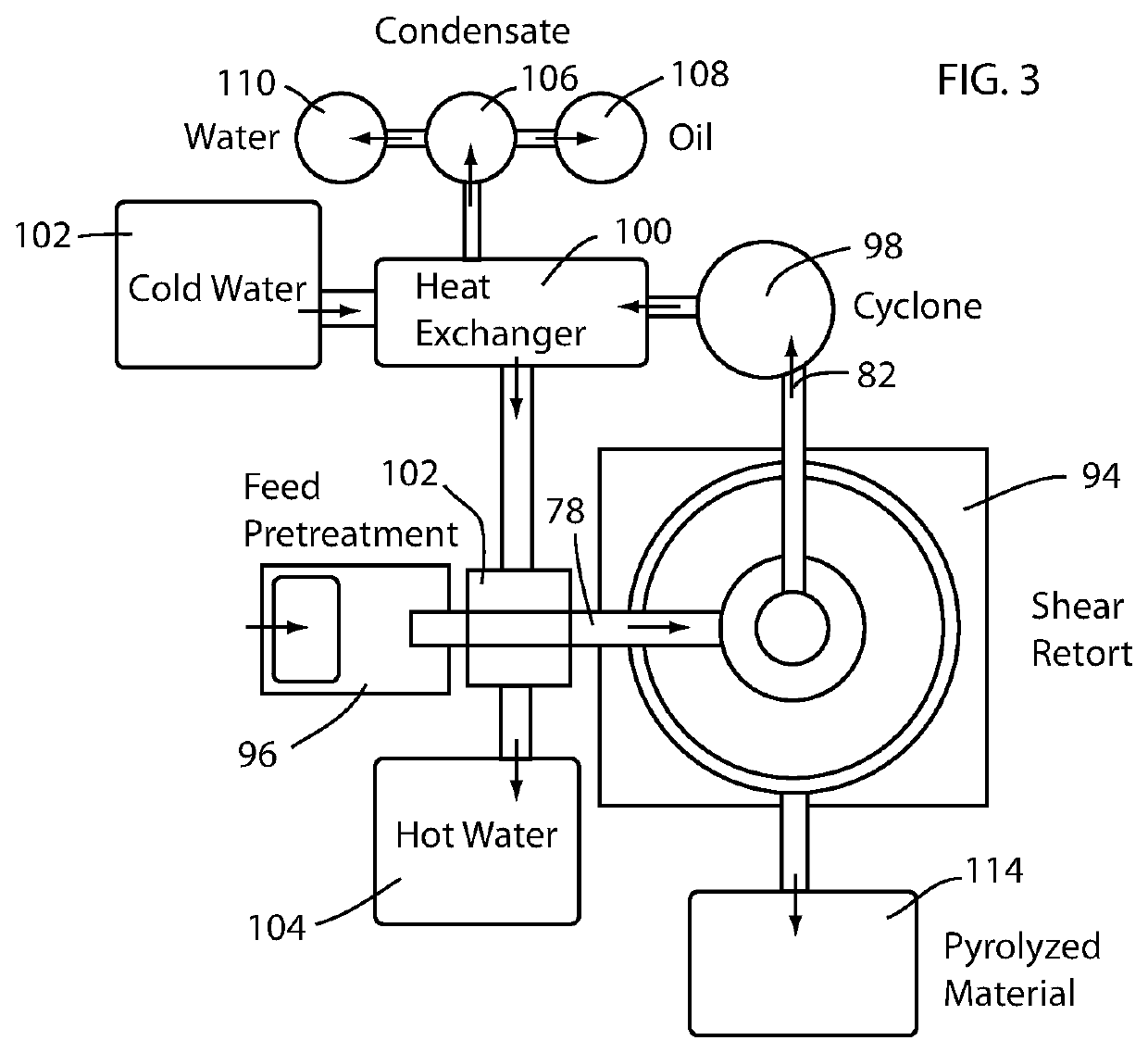Shear retort for ablative pyrolysis
a pyrolysis and ablative technology, applied in the field of pyrolysis reactors, calcination or ore processing, can solve the problems of harmful emissions, waste of valuable hydrocarbon products, and expensive separate drying steps
- Summary
- Abstract
- Description
- Claims
- Application Information
AI Technical Summary
Benefits of technology
Problems solved by technology
Method used
Image
Examples
Embodiment Construction
[0016]The shear retort processor here shown in FIG. 1 includes a rotating disk 2 with a conical flared cross section centered on an axis of rotation 4. The flare shape of the disk increasingly flattens in profile as it extends toward the periphery of the disk 6, where it is especially close to an enclosing drum 8, which is shown here as having a flat bottom. This close distance 10 is where there the maximum shear and grinding on the feed will take place. If the closest shear surfaces on the disk and drum are parallel, then there will be a region with this close distance where the maximum shear will take place.
[0017]A workspace 12 is defined by the space between the rotating disk 2 and the bottom of the drum 8, extending radially from the axis of rotation 4 to the disk periphery. A feed 14 enters the workspace 12 through a rotating hollow feed shaft 16 coupled to the rotating disk 2. A static exhaust pipe 18 is centered on the axis of rotation 4 at the center of the feed shaft 16 and...
PUM
| Property | Measurement | Unit |
|---|---|---|
| rotation | aaaaa | aaaaa |
| particle size | aaaaa | aaaaa |
| temperature | aaaaa | aaaaa |
Abstract
Description
Claims
Application Information
 Login to View More
Login to View More - R&D
- Intellectual Property
- Life Sciences
- Materials
- Tech Scout
- Unparalleled Data Quality
- Higher Quality Content
- 60% Fewer Hallucinations
Browse by: Latest US Patents, China's latest patents, Technical Efficacy Thesaurus, Application Domain, Technology Topic, Popular Technical Reports.
© 2025 PatSnap. All rights reserved.Legal|Privacy policy|Modern Slavery Act Transparency Statement|Sitemap|About US| Contact US: help@patsnap.com



